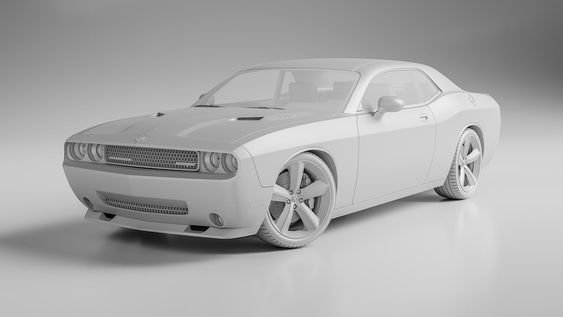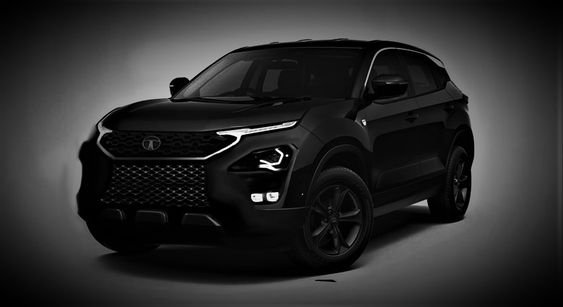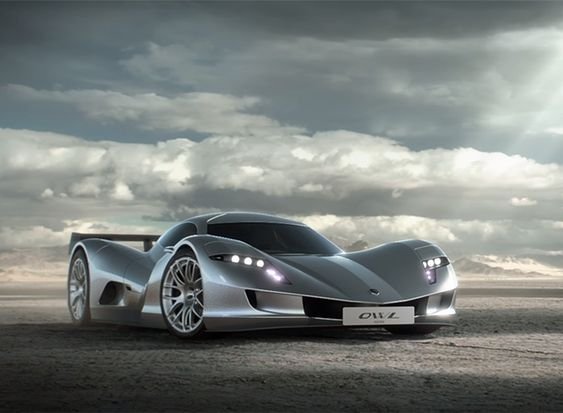
3D printing, also known as additive manufacturing, is revolutionizing industries across the globe, and the automotive sector is no exception. With its ability to create complex shapes, reduce material waste, and accelerate production times, 3D printing is poised to play a critical role in the future of automotive design. From prototyping and tooling to manufacturing end-use parts, 3D printing is reshaping how cars are designed, produced, and personalized. This article explores the various ways 3D printing is influencing automotive design and what the future holds for this innovative technology.
1. Rapid Prototyping and Design Iteration
Overview:
One of the most immediate impacts of 3D printing in automotive design is in rapid prototyping. Traditional methods of creating prototypes are often time-consuming and costly, involving complex processes and multiple suppliers. 3D printing streamlines this by allowing designers and engineers to quickly produce prototypes directly from digital models.
Key Benefits:
- Speed and Flexibility: 3D printing significantly reduces the time needed to produce prototypes. What once took weeks or months can now be accomplished in days or even hours, enabling faster iteration and refinement of designs.
- Cost Efficiency: The ability to print prototypes in-house reduces the need for expensive tooling and outsourcing, cutting costs and allowing for more frequent design changes.
- Complex Geometry: Designers can experiment with complex shapes and structures that would be difficult or impossible to create using traditional manufacturing methods.
Future Outlook:
In the future, rapid prototyping will continue to be a critical application of 3D printing in automotive design. With advances in materials and printing technologies, prototypes will become more realistic, mimicking the properties of final production materials, allowing for more accurate testing and validation.
2. Lightweight Components and Fuel Efficiency
Overview:
Weight reduction is a top priority in the automotive industry, as lighter vehicles are more fuel-efficient and produce fewer emissions. 3D printing allows for the creation of lightweight components without compromising on strength or durability.
Key Benefits:
- Optimized Designs: 3D printing enables the creation of parts with complex, lattice-like structures that provide the necessary strength while using less material, resulting in lighter components.
- Material Flexibility: Additive manufacturing allows the use of advanced lightweight materials, such as carbon-fiber-reinforced polymers, that are difficult to mold or cast using conventional methods.
- Reduced Waste: Unlike subtractive manufacturing processes, which involve cutting away material, 3D printing builds components layer by layer, minimizing material waste.
Future Outlook:
As material science continues to evolve, the range of lightweight materials available for 3D printing will expand, making it even more attractive for automotive manufacturers. This will lead to more innovative designs and the widespread adoption of 3D printing for producing lightweight structural components, directly contributing to the development of more fuel-efficient and environmentally friendly vehicles.
3. Customization and Personalization
Overview:
Consumer demand for personalized vehicles is on the rise. 3D printing offers a way to efficiently produce customized parts and accessories that cater to individual preferences, enabling a new level of personalization in automotive design.
Key Benefits:
- Custom Parts Production: From unique interior trims and dashboard designs to bespoke exterior components, 3D printing makes it easier to create customized parts tailored to the customer’s specifications.
- Cost-Effective Small Batch Production: Traditional manufacturing is often cost-prohibitive for producing small batches of custom parts. 3D printing, however, allows for economically viable production of one-off or limited-edition components.
- Rapid Modification: 3D printing allows for rapid modifications to designs, accommodating last-minute changes without significant delays or additional costs.
Future Outlook:
As 3D printing technology advances, the automotive industry will likely see an increase in on-demand manufacturing of custom parts. Dealerships or service centers may be equipped with 3D printers to create parts tailored to individual customer needs, offering a unique selling proposition and enhancing customer satisfaction.
4. Tooling and Manufacturing Aids
Overview:
3D printing is also transforming the production process itself by enabling the rapid production of custom tools, jigs, and fixtures. These tools are essential for efficient manufacturing and assembly but are often costly and time-consuming to produce using traditional methods.
Key Benefits:
- Reduced Lead Time: 3D printing can significantly reduce the time required to produce custom tools and fixtures, enabling faster production ramp-ups.
- Cost Savings: Additive manufacturing allows for the creation of complex tooling geometries at a fraction of the cost of conventional manufacturing methods.
- Improved Ergonomics: Custom tools can be designed to be lighter and more ergonomic, improving worker safety and reducing fatigue.
Future Outlook:
In the future, 3D printing will be increasingly used to produce adaptive and modular tooling that can be easily modified to accommodate different production needs. This will make the automotive manufacturing process more agile and responsive to market changes.
5. Reduced Inventory and Supply Chain Optimization
Overview:
The traditional automotive supply chain relies on mass production and warehousing of parts, leading to high inventory costs and potential waste. 3D printing offers an alternative by enabling on-demand production, reducing the need for large inventories and streamlining the supply chain.
Key Benefits:
- On-Demand Production: With 3D printing, parts can be produced as needed, reducing the need for large inventories and minimizing the risk of overproduction or obsolescence.
- Localized Manufacturing: Parts can be produced closer to the point of use, reducing transportation costs, lead times, and the environmental impact of shipping.
- Supply Chain Resilience: 3D printing can reduce reliance on a single supplier or region, enhancing supply chain resilience in the face of disruptions.
Future Outlook:
As 3D printing technology becomes more integrated into automotive production, we will likely see a shift towards decentralized manufacturing models. This approach will reduce inventory costs and improve responsiveness to customer demands and market changes, creating a more resilient and efficient supply chain.
6. Sustainability and Environmental Impact
Overview:
Sustainability is becoming a critical concern in the automotive industry, and 3D printing can play a significant role in reducing the environmental footprint of vehicle production.
Key Benefits:
- Material Efficiency: 3D printing uses only the material necessary to create the part, reducing waste compared to traditional manufacturing methods.
- Recycled Materials: Additive manufacturing can use recycled materials, further reducing the environmental impact of production.
- Lower Energy Consumption: 3D printing processes often require less energy than conventional manufacturing methods, contributing to a reduction in overall energy consumption.
Future Outlook:
As the automotive industry moves towards more sustainable practices, 3D printing will be increasingly adopted for its ability to reduce material waste, lower energy consumption, and utilize recycled materials. This will support the industry’s goals of achieving net-zero emissions and creating more environmentally friendly vehicles.
7. Production of Spare Parts and Legacy Components
Overview:
Maintaining an inventory of spare parts, especially for older or discontinued models, can be challenging and costly. 3D printing provides a solution by enabling the on-demand production of spare parts, even for legacy vehicles.
Key Benefits:
- On-Demand Production: Spare parts can be produced as needed, reducing the need for large inventories and storage costs.
- Availability of Legacy Parts: 3D printing allows for the production of parts for older vehicles, extending their lifespan and reducing waste.
- Reduced Downtime: On-demand manufacturing of spare parts minimizes vehicle downtime, improving customer satisfaction and reducing maintenance costs.
Future Outlook:
Automakers and service centers will increasingly use 3D printing to produce spare parts on demand, enhancing the availability of parts for older models and reducing the costs associated with maintaining a large inventory. This approach could also be extended to electric and autonomous vehicles, ensuring a steady supply of parts even for niche models.
8. Innovative Materials and Multi-Material Printing
Overview:
3D printing is not limited to traditional materials like plastics and metals. The technology enables the use of innovative materials, such as composites, bioplastics, and smart materials, which offer new possibilities for automotive design.
Key Benefits:
- Advanced Composites: 3D printing can create parts with advanced composite materials that offer superior strength-to-weight ratios.
- Smart Materials: The ability to print with smart materials that change properties in response to external stimuli opens new possibilities for adaptive and responsive automotive components.
- Multi-Material Printing: Advances in 3D printing technology allow for multi-material printing, where different materials can be combined in a single part, optimizing performance and reducing assembly requirements.
Future Outlook:
The use of innovative materials and multi-material printing will lead to the creation of more advanced automotive components with improved performance characteristics, such as lightweight, durability, and adaptability. This will open new avenues for vehicle design and functionality, particularly in electric and autonomous vehicles.
Conclusion
3D printing is set to play a transformative role in the future of automotive design. From rapid prototyping and lightweight components to customization, sustainability, and supply chain optimization, 3D printing offers numerous benefits that address current and future challenges in the automotive industry. As technology continues to advance, 3D printing will enable more innovative, efficient, and sustainable vehicle designs, making it an indispensable tool in the automotive design process. With its ability to accelerate production, reduce costs, and create unique, customized solutions, 3D printing is not just a tool of the future but a pivotal element shaping the automotive industry today.







